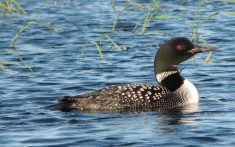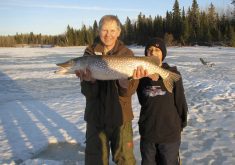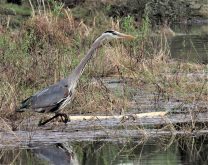This spring, the annual Manitoba Nocturnal Owl Survey will celebrate 30 years of counting owls — a remarkable achievement for an operation carried out mostly by volunteers.
The Nocturnal Owl Survey began in Manitoba in 1991. It’s now part of a nationwide survey, although other provinces do not always follow the exact same format as Manitoba.
Jim and Patsy Duncan began the survey and co-ordinated it for 25 years, before Christian Artuso took over the reins in 2015. Now run through Bird Studies Canada, the aim is to collect information on the relative abundance and distribution of owls to determine trends in their populations and habitat. In the future, Artuso hopes to pool Manitoba’s information with that from other provinces.
Usually the owl counts happen during the last two weeks of March and the first two weeks of April — depending on the weather and state of roads the surveyors need to follow. My husband and I took part in this survey several times, and it was always interesting. Some years we heard only one or two owls; other years were more productive.

Unlike most bird counts, this one does not depend on actually seeing owls, since most owl species are nocturnal — hunting primarily at night. In Manitoba, the snowy owl and the northern hawk owl are exceptions.
They are diurnal — active mainly during daylight hours.
Instead of seeing owls, surveyors count owls by listening for them at night.
Volunteers sign up ahead of time and are assigned a definite route to follow, beginning no sooner than 30 minutes after sunset. The survey may take up to a couple of hours, depending on the travel time needed to reach the starting point. Each route consists of 10 stops, one mile or 1.6 kilometres apart.
At each stop, surveyors listen for two minutes to determine if they hear any owls. Using the sheets provided, they record information such as type of owl heard, direction from the counter and the estimated distance, which isn’t always easy to determine.
Read Also

Electric fence to keep mice out of combines
Rodent Shield Systems reduces off-season damage in stored combines from mice and rats via an electric fence.
Surveyors also record weather conditions since that may affect results. Counts aren’t done if it is very windy or raining as then it’s too difficult to hear owls. Noisy frogs might also hinder the count if the survey is carried out too late in the season.
Since 1991 a few procedural changes have occurred. For instance, in the beginning surveyors played cassette tapes of owl calls to encourage owls to answer. To be part of the international standard for North America, Manitoba no longer uses this method, although some provinces still permit it.
The number of participants varies from year to year, as do the results. Some statistics are posted on the internet and can be interesting to study. For instance, in 2014, 100 volunteers surveyed 77 routes and estimated 178 owls of eight different owl species. In contrast, 2012 was a particularly good year for owls with 114 routes covered and 397 owls counted.

Over the years, 10 species of owls have been detected in Manitoba. According to Jim Duncan, three species account for 75 per cent of those heard: the great horned owl, northern saw-whet owl and boreal owl. The great grey owl has been noted in considerable numbers lately, so perhaps the 30th survey might show an increase in its numbers. Duncan, who also does bird banding, has banded over 50 great greys this winter.
Duncan emphasizes the ecological importance of owls and calls them “one of the best friends a farmer has.”
He tells how a few years ago he surveyed the nest of a great horned owl and discovered five dead rats in it, as well as partial remains of more rodents.
“A healthy owl population is better than putting out rat poison,” he says. Although he no longer runs the survey, Duncan has started a new program entitled “Discover Owls” with the motto “Conserving Owls Through Education and Research.” He gives presentations with a live owl present, often to schoolchildren. For more information or to book a visit, explore the Discover Owls website or email him at [email protected].
To prepare for the survey, volunteers listen to recordings of the various owl species. To hear the owls, and to read information about past surveys visit the Manitoba Nocturnal Owls Survey website.
If you’d like to sign up for this year’s Nocturnal Owl Survey, or want more information, contact Christian Artuso at [email protected].















